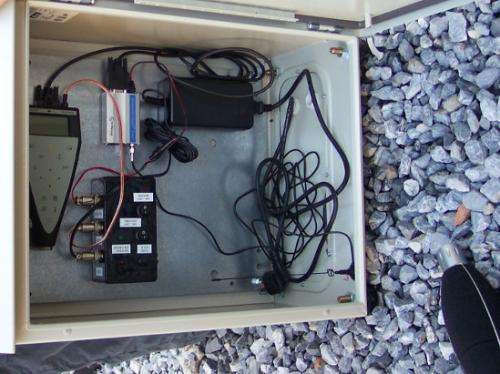A new method for measuring the flow of traffic a street has to bear by measuring atmospheric noise

Researchers from the University of Granada and the Carlos III University of Madrid have patented a new method to measure the flow of motorized traffic that a specific street carries each day, by measuring solely the levels of atmospheric noise. This pioneer system, unique in the world, is an alternative, or a complement, to other methods currently used to measure traffic flow, such as image counting or magnetic discharge levels.
This method, designed by the University of Granada, allows a differentiation between the flow of cars, LGVs, HGVs and motorbikes/scooters along a certain road by solely using the levels of atmospheric noise measured on said road. Its application is perfect for roads on which atmospheric noise is the predominant source (overcoming, by 10 Db, any other source of noise) and where traffic flows are of a medium to intense level. Furthermore, it has the added advantage of being more precise than other estimation methods, since it has been proven that it can estimate the total number of vehicles present on a given road over a very short-time period with a maximum error below 17%, which reduces the error for traffic flow estimations taken from sound recordings made over a longer time period.
The methodology developed by the researchers allows the information to be obtained by processing the experimental data using a Bayesian method, which can be developed in a computer algorithm, in order to systematize the prediction process. It is, therefore, a simple method of simple application (the meters can be fitted on top of a press stand, on a streetlamp or a house front) with virtually no prior installation work needed. Plus, it can used in real time and with no human supervision.
Controlling traffic
As the co-author of the research, Diego Pablo Ruiz Padillo, explains to us, this method can be used to control the type of traffic allowed in certain town or city areas (for example, to restrict HGVs on certain roads or streets); to obtain additional information for city/town planning; how to plan the number of parking spaces available for motorbikes/scooters; traffic-light regulation or to study traffic flow and its impact on the inhabitants of the urban area under study.
Ruiz also points out that the University of Granada group's invention, which has been patented by the Office for Research Results Transfer (OTRI), is, in fact, the processing system; software that, coupled to the noise meters or sound-level meters, allows an estimation of traffic flows, since the information is transmitted wirelessly.
Provided by University of Granada


















